When the people of a provincial don’t have any history to tell or write about, especially when their history was written by colonizers, outsiders, intruders ,rulers and many more, it’s an urge to revaluate it’s roots ,it’s aborigines, it’s own languages, tribal, their way of living, and many more.
‘Darjeeling: In search of People’s History of the Hills’ , edited by Dr. Srikanta Roychowdhury, Professor in History , Southfield College, Darjeeling and Dr. Dinesh Chandra Ray, Professor in History, Southfield College, Darjeeling.
People without the knowledge of their past history, origin and culture is like a tree without roots.
That’s why Orwell said- ” The most effective way to destroy people is to deny and obliterate their own understanding of their history. ”
Awkwardly it’s true that the history people of Darjeeling were written by the elite, privileged colonizers, not by the local, common people. I guess it is the most dangerous oppression against the people of Darjeeling to not allow to know about their own Historical past, their origins, nineteen odd castes, several ethnic tribes and more.
This most valuable document dealt with several major areas that are crucial in revaluation of people’s history of Darjeeling.
Darjeeling, as we know her is commonly famous for it’s weather, greeneries, hills ,fogs, mists ,Mall, Chowrasta, Glenery’s , Keventer’s and many more, which aren’t only part of this northern- most part of the state of West Bengal.
Rather, its major part lies in the livelihood and culture of the people, its landscapes, tribes and tribal cultures, geographical pattern ,socio cultural background and many more.
In this much essential historiographical research, Dr. Roychowdhury and Dr. Ray compiled and edited some most prolific Academicians and Professors whose valuable contribution in each section of different wings focussed various areas such as, The conceptual frameworks and methodological understandings, the contemporary history of the hills and how it’s affected by the colonial rulers who never paid attention towards the common people’s history; rather they showcased the development of culture, education, colonial buildings made by them, active propaganda of the Christian missionaries and their active role in conversion into Christianity to expand the Western civilization and learning the coming generations.
Their other interest was to record the information related to tea plantations, its growth and development in this serene, hilly region.
To be honest, British colonizers had no interest to tear apart the structure and to strive to renew or to explore and consider the history of the most ‘locals’ or common inhabitants of Darjeeling.
As a result, the colonized writers also deprived the role of colonized common people, different ethnic groups, tea garden workers, livelihood of women and their every day problems.
Dr. Roychowdhury and Dr. Ray ,along with Mr. Deepjoy Katuwal, Mr.Dewakar Thatal, Mr.Vivek Thapa, Somoshree De, Suman Mukherjee, Tanka.B.Subba, Professor Sushma Rai, Rathika Subba and many erudite writers opened our eye by gifting such a miraculous document regarding the history of the people and the hills of Darjeeling.
This book is divided into six different parts, each examined and discussed vividly by the above said writers.
As I said this ain’t a book that to be cherished as a novel, storybook or some book of travelling, or regarding any religious aspects.
If one tries to find any of these aspects, s/he would have to fail to dig deep into the roots of today’s Colonized Darjeeling.
Beside all these aspects, much more important affairs are there we still don’t know.
While reading Dr.Subba’s article, quite naturally some questions arose which are discussed in quite disciplined way.
‘ If Darjeeling is conceived merely a place, the answer is ” no” .
The reason also is straightly discussed-
‘according to Raphael Samuel, people’s history is not about places ,but about faces’ .
It’s also proven in various parts of our country, that faces ,not places mark the identify of that special territory.
Such as- faces are quite different in the western part of our country than the Eastern, north-eastern part.
Each holds their own historical context and background, that are different from each other.
According to B.Subba,
Competing and conflicting voices erased the social and economic exploitation within, and derecognized the identities of different ethnic community, living in a particular place like Darjeeling.
Human being ain’t a stagnant being, whose development, changes doesn’t happen.
Changes in their thoughts ,culture, experiences, ideologies are quite common and that’s why a group separated themselves to sacrifice their lives in 1980s for a separate state, Gorkhaland, while others opposed them and they also sacrificed their lives.
History of the people of Darjeeling should deal with these incidents, not with the written history of the Colonized rulers.
Lekhraj Balmiki’s article discussed with the roots of the Balmiki community of Darjeeling, a community migrated from the Northern part of India.
Lekhraj illustrated vividly about their process of movement of their community as ‘forced migrants’ during the pre-Independence epoch to voluntary migrants in the post-Independence period .
Scholars of History never raised questions about the contribution of the Balmiki community, which the Author portrayed illustratively about the social, political, economic, cultural dimensions of this very own community of Darjeeling.
Here I’m going to discuss some other special discussions which is widely depicted in this book .
Dr. Sushma Rai elaborated vividly about the rise of Nepali Language in India, where Sanskrit was the dominant Language.
She rigorously discussed with chronological way that the first official survey of Languages in India was conducted under the supervision of Sir George Abraham Grierson around 1898 to 1928 and he was the first Superintendent of the newly created Linguistic Survey of India.
Some more surveys were done after this and Sushma Rai clearly discussed that apart from the 122 languages, the survey says that there are some other tribal languages from nomadic communities, from the interiors of north- eastern part of the country that are spoken by less than 10,000 people.
She distinctly elaborated the impact of Nepali Language with its various appellations like Khas, Khas Kura, Pahari , Parbate, Parbattia, Gorkhali, Gorkha Bhasa etc.
Nepali Language is called Khas at first, because the people living in the Himalayan region covering some parts of present day India and the western Himalayan range of present day Nepal, who basically flew from India during the Muslim invasion, were usually known as Khas by the original inhabitants of Eastern Nepal .
Nepali Language is also known as the Desh Bhasa, since the foundation of the Gorkha dynasty.
According to Sushma Rai, the formal education in Darjeeling hills started only after the settlement of the Christian missionaries in this hilly region around 1842.
Record says that Rev. W. Start was the private missionary who opened a school for the Lepchas.
Though William Macfarlane was among the first Scottish missionaries in Darjeeling around 1869 who started a temporary school in a rented building just above the Ging Tea Estate with twenty Nepali and Lepcha orphans. He trained a group of boys from the local area to impart education in the hills, he selected a group of teachers from the area who have a good command over the local language.
However, this class later served as the centre of a training school at Kalimpong which later trained other teachers for the whole district.
Rathika Subba emphasized the development of the tea industry along with another sound writer Nima Doma Lama which is one of the most important business network throughout the whole world.
However, the history of the place began only with the advent of the colonial rule. Hence, Darjeeling designed the history of tea plantations along with the workers from the common people ,from the tribes and local communities.
The history of tea gardens of Darjeeling confronted many conflicts of social exclusion, marginalized politics, crisis od identify which itself serve an important source to excavate narratives which accredited to the tea gardens and its workers and their own literature.
Without discussing Tea industry of Darjeeling and its own ethnic community, it’d be a blank knowledge to know our northern most Himalayan region, which hasn’t its own people’s history.
The history of Darjeeling anyway, written by the Colonial rulers, invaders , British Missionaries and the colonized Indian people who highlighted only from their view point of their colonial masters, as Dr. Roychowdhury mentioned in his Introduction.
The rich oral traditions of Lepchas and the Limbus, references of literary works like ‘ Mainhaj-us-Siraj’s Tabaqat-i-Nasiri, records of the Namgyals and Bhutan House of Kalimpong undoubtedly refer to a rich pre-colonial past and refuse such distorted views of the formal suited English-educated native writers.
That’s why, it’s quite natural that the people of Darjeeling had no such acclaimed heritage ,even the nationalist writers also neglected to write about the backward regions like Darjeeling hills.
Under the supervision and guidance of Dr. Srikanta Roychowdhury and Dr. Dinesh Chandra Ray, some erudite writers/ historians, professors held their valuable pen to write much needed history of the people of Darjeeling hills.
It’s iconic that some researchers’ involvement and initiative put forward their step to make a collective endeavour to bring out the hidden voices of the people of Darjeeling, their culture through their reconstruction of the history of this most beautiful part of the Northern most Himalayan region .
If you’ve already visited Darjeeling or planning to visit, know it’s people’s voices that was erased from the colonial rulers history.
Each one who visited Darjeeling should read this most demanded book, before visiting Darjeeling or I’d like to say even after several visits.
As most of us couldn’t able to know the real history of the people of Darjeeling, yet we went there merely as travellers and Darjeeling welcomed us with its innate warmth and hospitality.
©️ Sonali
Sonali Chanda is an eminent poet/writer/reviewer from Kolkata, India .
She pursued her Post graduation degree in English literature and language from Burdwan University.
At present ,she is pursuing her Phd in Post modern English Language, Indigenous Language of India, different usages of phonetics in Language.
Her three books published and running successfully in Amazon and Flipcart Platform.
She won the Nissim International award in 2020 for ” the excellence
in Writing” for her Debut Travelogue Ladakh- Enroute Tibetan Taboos “

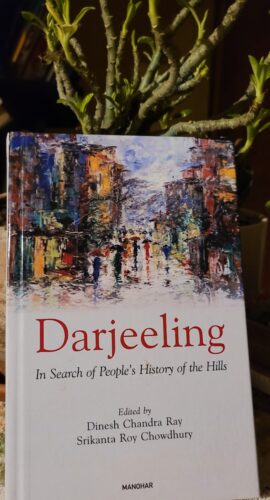

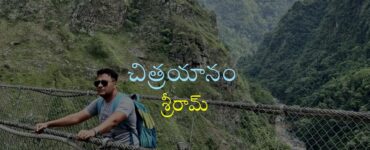


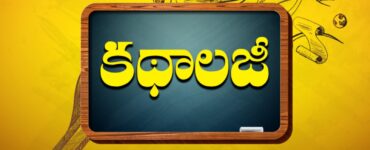
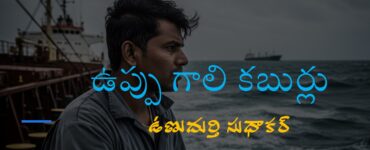
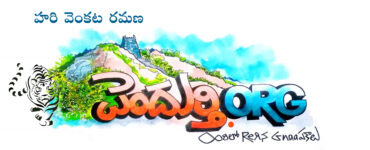
Add comment